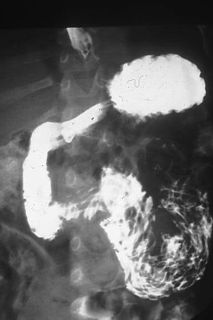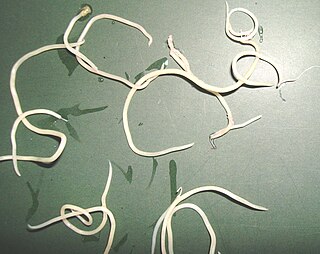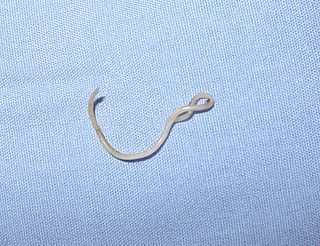
Ascariasis is a disease caused by the parasitic roundworm Ascaris lumbricoides. Infections have no symptoms in more than 85% of cases, especially if the number of worms is small. Symptoms increase with the number of worms present and may include shortness of breath and fever in the beginning of the disease. These may be followed by symptoms of abdominal swelling, abdominal pain, and diarrhea. Children are most commonly affected, and in this age group the infection may also cause poor weight gain, malnutrition, and learning problems.

Praziquantel (PZQ), sold under the brandname Biltricide among others, is a medication used to treat a number of types of parasitic worm infections in mammals, birds, amphibians, reptiles, and fish. In humans specifically, it is used to treat schistosomiasis, clonorchiasis, opisthorchiasis, tapeworm infections, cysticercosis, hydatid disease, and other fluke infections. It should not be used for worm infections of the eye. It is taken by mouth.

Helminthiasis, also known as worm infection, is any macroparasitic disease of humans and other animals in which a part of the body is infected with parasitic worms, known as helminths. There are numerous species of these parasites, which are broadly classified into tapeworms, flukes, and roundworms. They often live in the gastrointestinal tract of their hosts, but they may also burrow into other organs, where they induce physiological damage.

Hookworm infection is an infection by a type of intestinal parasite known as a hookworm. Initially, itching and a rash may occur at the site of infection. Those only affected by a few worms may show no symptoms. Those infected by many worms may experience abdominal pain, diarrhea, weight loss, and tiredness. The mental and physical development of children may be affected. Anemia may result.

Baylisascaris is a genus of roundworms that infect more than fifty animal species.
Colic in horses is defined as abdominal pain, but it is a clinical symptom rather than a diagnosis. The term colic can encompass all forms of gastrointestinal conditions which cause pain as well as other causes of abdominal pain not involving the gastrointestinal tract. The most common forms of colic are gastrointestinal in nature and are most often related to colonic disturbance. There are a variety of different causes of colic, some of which can prove fatal without surgical intervention. Colic surgery is usually an expensive procedure as it is major abdominal surgery, often with intensive aftercare. Among domesticated horses, colic is the leading cause of premature death. The incidence of colic in the general horse population has been estimated between 4 and 10 percent over the course of the average lifespan. Clinical signs of colic generally require treatment by a veterinarian. The conditions that cause colic can become life-threatening in a short period of time.

Echinococcus multilocularis is a small cyclophyllid tapeworm found extensively in the northern hemisphere. E. multilocularis, along with other members of the Echinococcus genus, produce diseases known as echinococcosis. Unlike E. granulosus,E. multilocularis produces many small cysts that spread throughout the internal organs of the infected animal. The resultant disease is called Alveolar echinococcosis, and is caused by ingesting the eggs of E. multilocularis.

Ascaris is a genus of parasitic nematode worms known as the "small intestinal roundworms", which is a type of parasitic worm. One species, Ascaris lumbricoides, affects humans and causes the disease ascariasis. Another species, Ascaris suum, typically infects pigs. Parascaris equorum, the equine roundworm, is also commonly called an "ascarid".

Ascaridia galli is a parasitic roundworm belonging to the phylum Nematoda. Nematodes of the genus Ascaridia are essentially intestinal parasites of birds. A. galli is the most prevalent and pathogenic species, especially in domestic fowl, Gallus domesticus. It causes ascaridiasis, a disease of poultry due to heavy worm infection, particularly in chickens and turkeys. It inhabits the small intestine, and can be occasionally seen in commercial eggs.

Mebendazole (MBZ) is a medication used to treat a number of parasitic worm infestations. This includes ascariasis, pinworm infection, hookworm infections, guinea worm infections, hydatid disease, and giardia, among others. It is taken by mouth.
Uncinaria stenocephala is a nematode that parasitizes dogs, cats, and foxes as well as humans. It is rare to find in cats in the United States. Uncinaria stenocephala is the most common canine hookworm in cooler regions, such as Canada and the northern regions of the US, where it can be found primarily in foxes (40%). U. stenocephala is also one of the most common hookworms in the UK, called the northern hookworm, however it has a rather low prevalence. U. stenocephala is also considered to be zoonotic hookworms because they live in animals but can be transmitted to humans.

Strongylus vulgaris, commonly known as the blood worm, is a common horse parasite in the phylum Nematoda. It looks like a long worm with a large biting mouth. They are usually reddish in color because of all the blood they take from the equine host. This nematode is considered to be one of the "most pathogenic" of the large strongyles subphylum and is distributed worldwide, wherever there are grassland and temperate environments.

Toxocara canis is a worldwide-distributed helminth parasite of dogs and other canids. The name is derived from the Greek word "toxon," meaning bow or quiver, and the Latin word "caro," meaning flesh. They live in the small intestine of the definitive host. In adult dogs, the infection is usually asymptomatic but may be characterized by diarrhea. By contrast, massive infection with Toxocara canis can be fatal in puppies, causing diarrhea, vomiting, an enlarged abdomen, flatulence, and poor growth rate.

Toxocara cati, also known as the feline roundworm, is a parasite of cats and other felids. It is one of the most common nematodes of cats, infecting both wild and domestic felids worldwide. Adult worms are localised in the gut of the host. In adult cats, the infection – which is called toxocariasis – is usually asymptomatic. However, massive infection in juvenile cats can be fatal.

Deworming is the giving of an anthelmintic drug to a human or animals to rid them of helminths parasites, such as roundworm, flukes and tapeworm. Purge dewormers for use in livestock can be formulated as a feed supplement that is eaten, a paste or gel that is deposited at the back of the animal's mouth, a liquid drench given orally, an injectable, or as a pour-on which can be applied to the animal's topline. In dogs and cats, purge dewormers come in many forms including a granular form to be added to food, pill form, chew tablets, and liquid suspensions.

Toxascaris leonina is a common parasitic roundworm found in dogs, cats, foxes, and related host species. Toxascaris leonina, or T. leonina, is an ascarid nematode, a worldwide distributed helminth parasite which is in a division of eukaryotic parasites that, unlike external parasites such as lice and fleas, live inside their host. The definitive hosts of T. leonina include canids and felines (cats), while the intermediate hosts are usually rodents, such as mice or rats. Infection occurs in the definitive host when the animal eats an infected rodent. While T. leonina can occur in either dogs or cats, it is far more frequent in cats.
Anthelmintics or antihelminthics are a group of antiparasitic drugs that expel parasitic worms (helminths) and other internal parasites from the body by either stunning or killing them and without causing significant damage to the host. They may also be called vermifuges or vermicides. Anthelmintics are used to treat people who are infected by helminths, a condition called helminthiasis. These drugs are also used to treat infected animals.

Anoplocephala perfoliata is the most common intestinal tapeworm of horses, and an agent responsible for some cases of equine colic.
Parascaris univalens is a parasitic ascaridoid nematode that infects the gastrointestinal tracts of equines.
Strongyloides westeri, commonly referred to as intestinal threadworm, is a species of small nematode parasite in the family Strongylidae. Strongyloides are commonly found in the small intestine of mammals, that are characterized by an unusual lifecycle that involves one generations of free-living adult worms.















